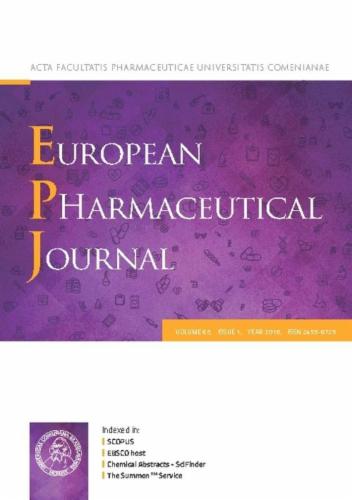应用暴露-反应分析提高儿童免疫介导肾病患者霉酚酸酯给药精度的机器学习模型。
IF 4.3
3区 医学
Q1 PHARMACOLOGY & PHARMACY
引用次数: 0
摘要
背景:霉酚酸酯(Mycophenolate mofetil, MMF)是一种治疗狼疮肾炎的基础免疫抑制剂,越来越多地在儿童免疫介导性肾脏疾病的说明书外使用。本研究的目的是建立并验证MMF的活性代谢物霉酚酸(MPA)的药代动力学模型,以暴露-反应分析为指导,优化中国儿童免疫介导肾病患者的给药策略。方法:我们建立并验证了PK模型,使用来自171名不同免疫介导肾病的中国儿科患者的513 MPA浓度测量数据,分为训练组和测试组(4:1比例)。建立了具有一级吸收的二室种群药代动力学(PopPK)模型。同时,使用选择的特征进行反向消除过程训练7个机器学习(ML)模型。通过多个指标评估模型性能,以确定最佳模型。我们对20例难治性肾病综合征患者进行了暴露-反应分析,以确定指导个体化给药的有效暴露阈值。结果:在评估的模型中,随机森林表现出最佳的性能,SHapley加性解释(SHAP)分析确定血浆白蛋白、钙和肝肾功能标记物是MPA暴露的关键预测因子。难治性肾病综合征的暴露-反应分析揭示了一个关键治疗阈值(AUC0-12 h bb0 - 30 mg·h/L),与降低24小时尿蛋白水平和降低疾病进展风险相关。制定体重和白蛋白调整给药方案以优化个体化治疗。结论:基于暴露反应分析和已建立的模型模拟,我们提出了针对患者特征的分层剂量建议,旨在优化儿科患者的MMF治疗。本文章由计算机程序翻译,如有差异,请以英文原文为准。
Applying exposure-response analysis to enhance Mycophenolate Mofetil dosing precision in pediatric patients with immune-mediated renal diseases by machine learning models
Background
Mycophenolate mofetil (MMF), a cornerstone immunosuppressant for lupus nephritis, is increasingly used off-label in pediatric immune-mediated renal diseases. The aims of this study were to develop and validate pharmacokinetic models for mycophenolic acid (MPA), the active metabolite of MMF, to optimize dosing strategies in Chinese pediatric patients with immune-mediated renal diseases guided by exposure-response analysis.
Methods
We developed and validated PK models using 513 MPA concentration measurements from 171 Chinese pediatric patients with diverse immune-mediated renal diseases, split into training and testing cohorts (4:1 ratio). A two-compartment Population Pharmacokinetic (PopPK) model with first-order absorption was established. In parallel, seven Machine Learning (ML) models were trained using the selected features with backward elimination process. Model performance was evaluated by multiple metrics to identify the best model. The Exposure-response analysis was performed in 20 refractory nephrotic syndrome patients to determine an effective exposure threshold for guiding individualized dosing.
Results
Among evaluated models, Random Forest demonstrated optimal performance, with SHapley Additive exPlanations (SHAP) analysis identifying plasma albumin, calcium, and hepatic/renal function markers as key predictors of MPA exposure. Exposure-response analysis in refractory nephrotic syndrome revealed a critical therapeutic threshold (AUC0–12 h > 30 mg·h/L), correlating with reduced 24-hour urinary protein levels and lower disease progression risk. Weight- and albumin-adjusted dosing regimens were formulated to optimize individualized therapy.
Conclusions
Based on exposure-response analyses and established model simulations, we proposed stratified dosing recommendations tailored to patient characteristics, aiming to optimize MMF therapy in pediatric patients.
求助全文
通过发布文献求助,成功后即可免费获取论文全文。
去求助
来源期刊
CiteScore
9.60
自引率
2.20%
发文量
248
审稿时长
50 days
期刊介绍:
The journal publishes research articles, review articles and scientific commentaries on all aspects of the pharmaceutical sciences with emphasis on conceptual novelty and scientific quality. The Editors welcome articles in this multidisciplinary field, with a focus on topics relevant for drug discovery and development.
More specifically, the Journal publishes reports on medicinal chemistry, pharmacology, drug absorption and metabolism, pharmacokinetics and pharmacodynamics, pharmaceutical and biomedical analysis, drug delivery (including gene delivery), drug targeting, pharmaceutical technology, pharmaceutical biotechnology and clinical drug evaluation. The journal will typically not give priority to manuscripts focusing primarily on organic synthesis, natural products, adaptation of analytical approaches, or discussions pertaining to drug policy making.
Scientific commentaries and review articles are generally by invitation only or by consent of the Editors. Proceedings of scientific meetings may be published as special issues or supplements to the Journal.

 求助内容:
求助内容: 应助结果提醒方式:
应助结果提醒方式:


